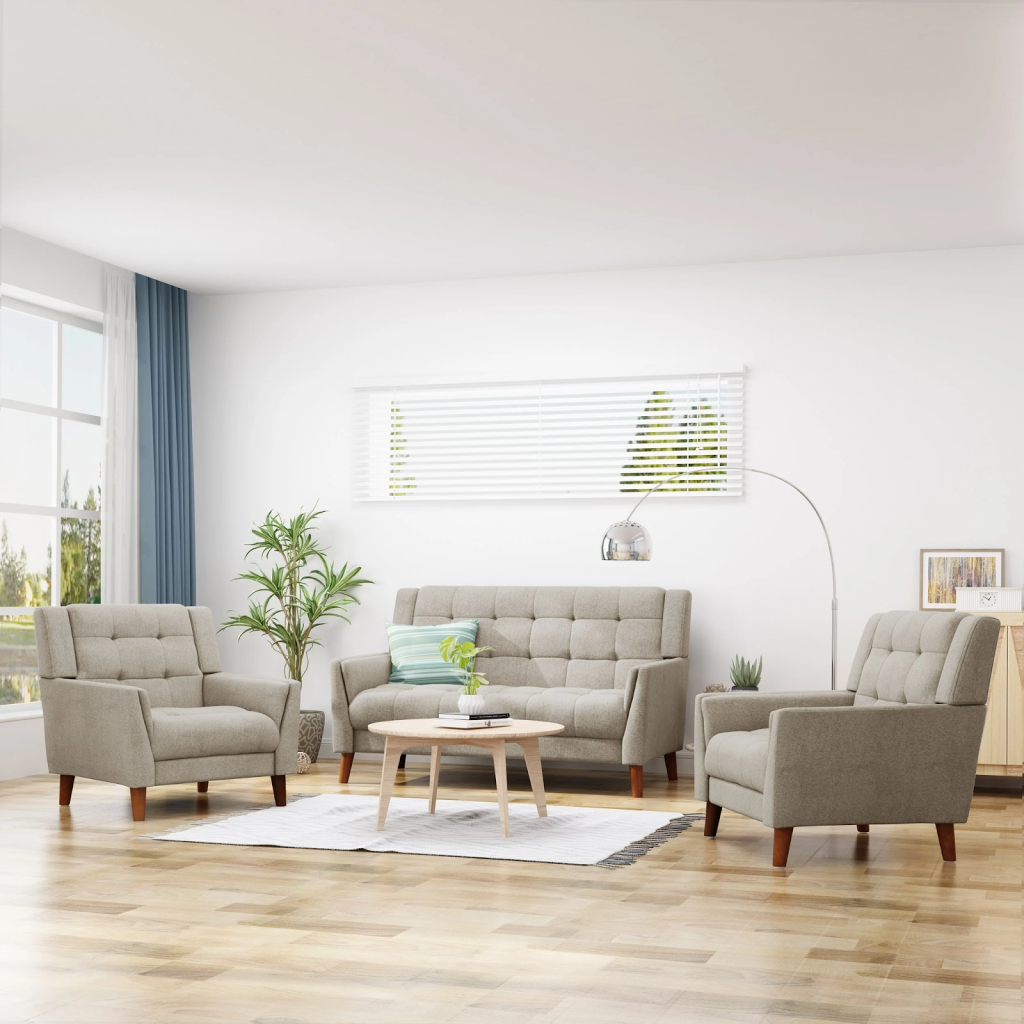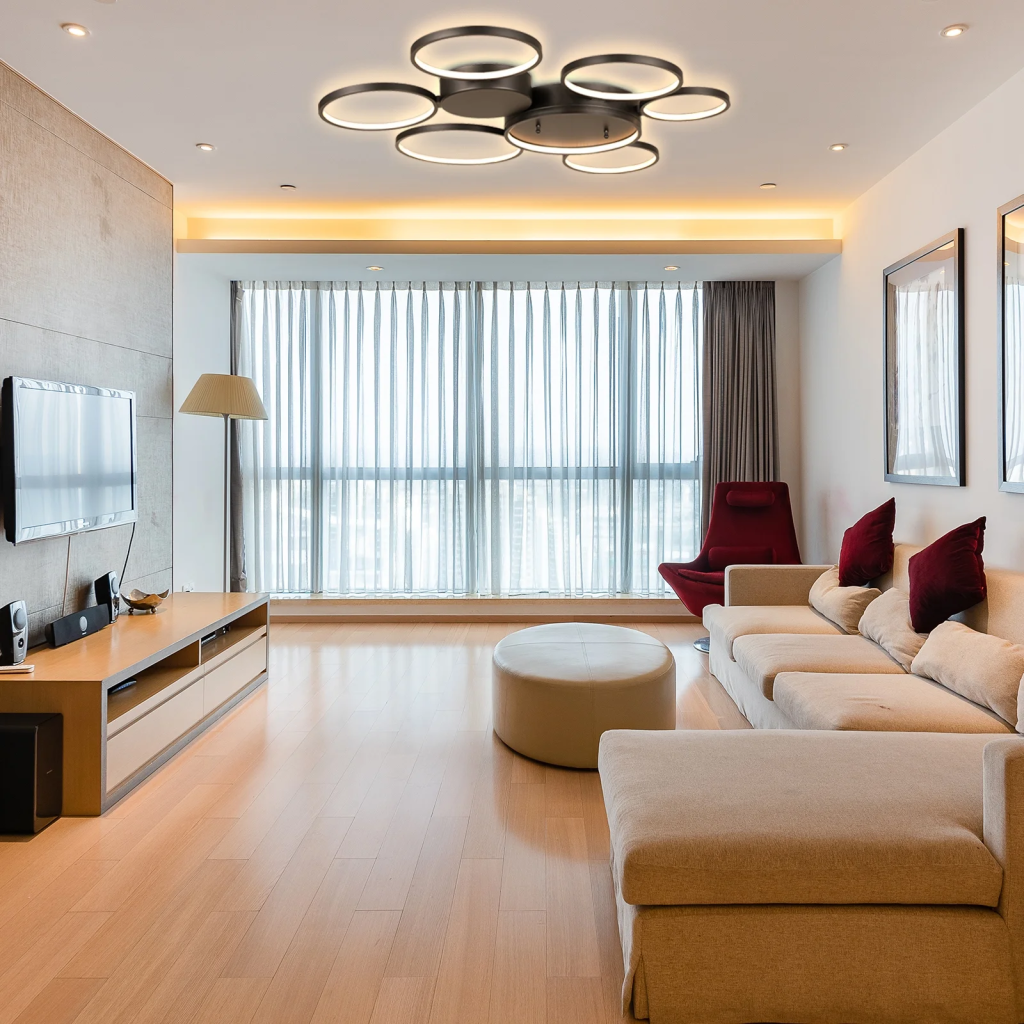9 Ways on How to Improve Lighting in the Living Room with Can Lights
More than just the visual aesthetic of a living room, what makes the sight more beautiful are the lights. Lighting design is one of the most significant factors to consider in designing any space, regardless if it is for indoor or outdoor space. Light is used to maximize the function of a particular space. But, at the same time, it makes the design of a space more appealing to the eyes. It highlights the details of the design that tells you where to look as you enter the living room. In modern-day renovations, a can light is one of the most famous lighting fixtures used for the living room. Whether it be the main or supplementary lighting source, they sure do know how to illuminate and accentuate any space. With that in mind, we have 10 ways on how to improve the lighting in the living room with can lights. This might come in handy for your next renovation project.
- Plan the Lighting Design


In improving the lighting distribution of every room, one must begin with planning the layout of the lights. This includes what type to use, how many pieces, what are the distances, and what is the intensity of the bulbs. No matter how beautiful the interior of the living room may seem. If the lighting design is not well-planned, the points of aesthetic impact would not be highlighted. Lighting has the power to make things even more beautiful by setting a spotlight on all the elements in the living room. It builds how the environment will be when they are used. As the multi-purpose space of the house, it is suggested to work with a lighting plan that induces a productive and relaxing environment. Be creative and resourceful in using can lights for the living room. It is more than accent lighting. In fact, it is essential supplementary lighting.
- Measure the Floor to Ceiling Height of the Living Room


The floor-to-ceiling height of the living room is the basis of how much can light and what is the required intensity to illuminate the area. The average measurement from the floor to the ceiling ranges from 6 to 13 feet. For low ceiling living room designs, we highly recommend limiting the number of lights and the intensity to be set on the mid mode. Using too much or too intense lighting will affect the visual impact of the room. It can also cause harmful eye strain when exposed for a longer period. For high ceiling living room designs, it would be best to have a balanced distribution of light throughout the space. We highly recommend setting the intensity to high to put the light to good use. It would maximize the use of the light considering the intensity of the lighting. At the same time, it would minimize the use of the other lighting fixture in the living room.
- Know the Use of Can Lights


In the traditional reflected ceiling layouts, residential houses opt for either incandescent, fluorescent, or LED bulbs to illuminate the room. With its plenty of variations, most are used for the sole purpose of distributing light throughout the room. Every type of light to be used depends on its purpose whether it be for task lighting or accent lighting. It is a good thing can lights can work for both. Can lights are multi-purpose lighting that is tagged as the most customizable type. The color and intensity can be controlled depending on its use. Some may use it as complementary lighting while some use it as the main source of lighting. Can lights provide a larger distribution of lights throughout the room. In spite of their distance from one another, they manage to cover even the awkward empty spots in the living room.
- Layout the Location of Each Light


During the planning phase, it would be best to locate where the recessed can lights are placed. The first step on how to do it is by measuring the floor-to-ceiling height of the living room and dividing it by two. The result would be the distance of the can lights from one another. If the floor-to-ceiling height is nine feet, dividing it by two would give you four and a half. That would be the distance of one can light to another. This is just to give you an idea of how many can lights are needed for the living room. In some cases, they just locate the lights on the four corners of the room and the center. It will not work for all living room layouts considering how they vary in size. Always consider the formula to prevent overdoing the design and making the living room look too bright.
- Consider the Other Lighting Fixtures Used


Apart from the can lights, it would be best to consider the other lighting fixtures that will be used in the living room. As the main communal space for the household, we tend to make the living room lighting design grand. Thus, the use of ambient, task, and accentuating lighting fixtures. Examples of ambient lighting fixtures include pendant lighting, chandelier, track lighting, wall sconces, and recessed lighting. Accentuating lighting fixtures are the ones building the vibe of the living room. They come in small numbers just for the sake of blending with the ambient lighting fixtures. More often than not, it may come in a different color, shape, and intensity. Examples of accent lighting fixtures would be LED strip lights, floodlights, picture lights, and recessed lights. Task lighting is the one that often comes in smaller sizes but releases the most intensity. Its purpose is to illuminate directly to a particular space and does not contribute to the amount of lighting in the entire room.
- Choose Sustainable Alternatives


If you are on a tight budget, we highly suggest choosing sustainable alternatives. Take windows as an opportunity to acquire natural lighting during the day. This will help in minimizing the use of lights during the day and conserve energy instead. Natural lighting often comes brighter than artificial lighting. To top it off, it does not cost a dime considering that the light comes from the sun. Using can lights for your living room on a tight budget would require investing in LED bulbs to illuminate the room. They are designed for longer operational spans, light up even in extreme temperatures, and save energy resulting in minimal consumption. Always view the opportunities of the space designated for the living area because this will help in cutting time, labor, and expenses.
- Identify the Cause of Glare


One of the few things to consider in using can lights is the possible glares in times when you are watching on the television, working on your laptop, or using your mobile phone. Too many lighting fixtures can induce multiple sources of glares. Considering that it is the fundamental space for entertainment, keeping the lights at a minimum should be practiced. If you are fond of having a bright environment, work with adjustable can lights where you can set the mode. This will allow you to have a controlled environment. Besides, it can be a bugger to watch or read something on the screen of your gadget and observe that the glares are highly visible. Glares tend to cause a lack of focus on what you are doing. Sometimes, it can ruin the mood too. Imagine how much it can be a bummer to watch a horror movie when you can see visible glares of the light on the screen.
- Consider the Layout of the Living Room


In using can lights for the living room, the first consideration would be the layout of the living room. Sometimes, we tend to overdo the lighting that we fail to brighten up the necessary spaces. Always remember to base your lighting layout on the layout of the furniture. Prevent locating the can lights directly on top of the furniture. It would be best to leave some spacing to manage the shadows of the person sitting on the couch or standing on the corner. Always consider how it would look when people are around. Since we are building a homey atmosphere where they can lounge and chill, use the lighting in ways that would benefit the users. Besides, it would not be nice to take pictures when the light is directly on the top of your head.
- Identify the Preferred Vibe for the Living Room


What is the purpose of the can lighting in the living room you want to build? Is it for the sake of accent lighting or do you want it to be the main source of lighting in the living room? These are the two questions you should ask yourself. The living room is a multipurpose room. It caters to guests, means of entertainment, houses communal gatherings and there would be times where you prefer to work in the living room. With that in mind, you have to balance the type of lighting to be used. Can lights in the living room can be used as ambient lighting paired with stripped lights for the recessed ceiling to create a homey and warm ambiance. Always bear in mind the activities you will do often in the space you want to design. There should be a lighting fixture for every activity in order to maximize the use of the living room.
